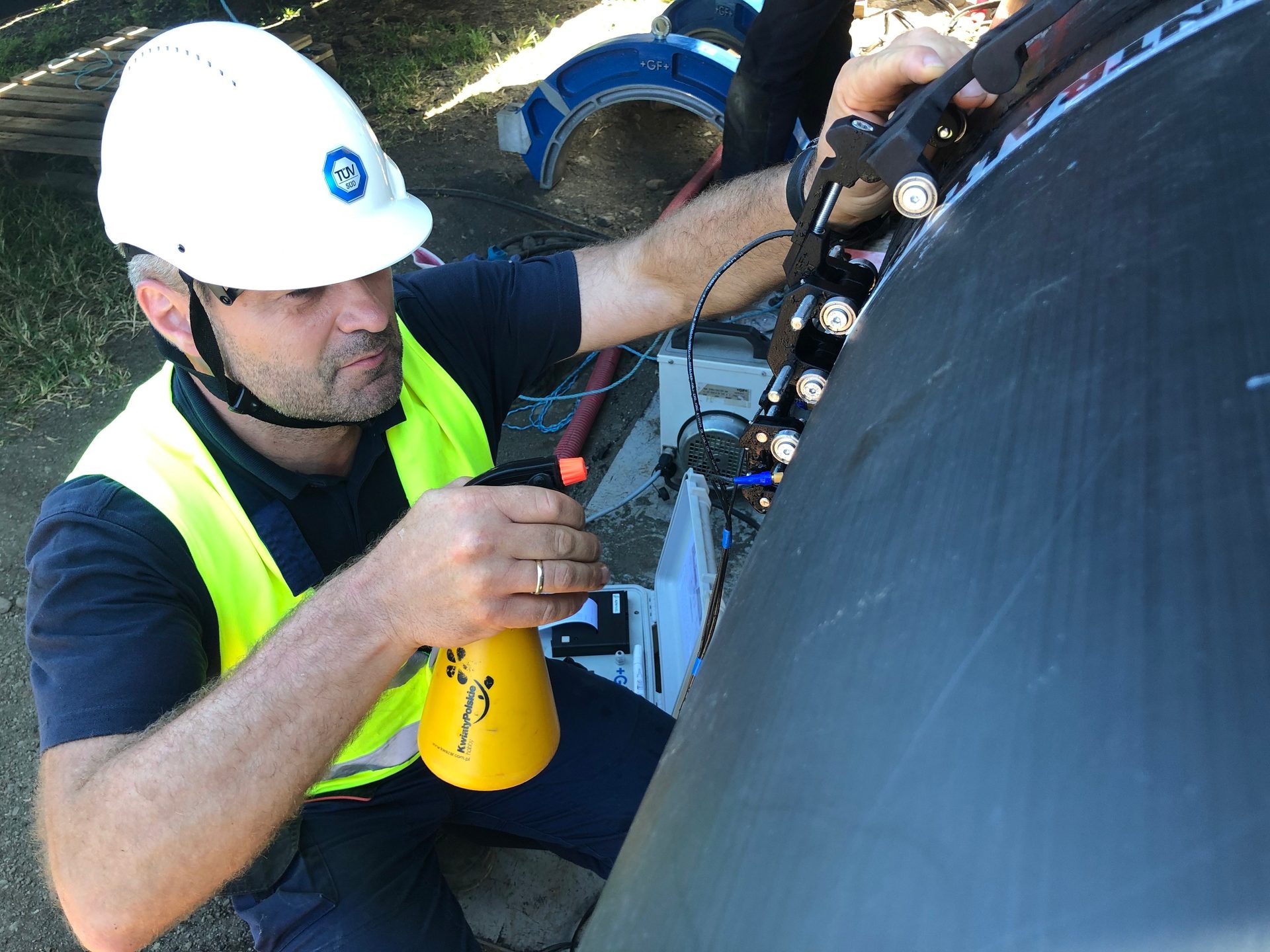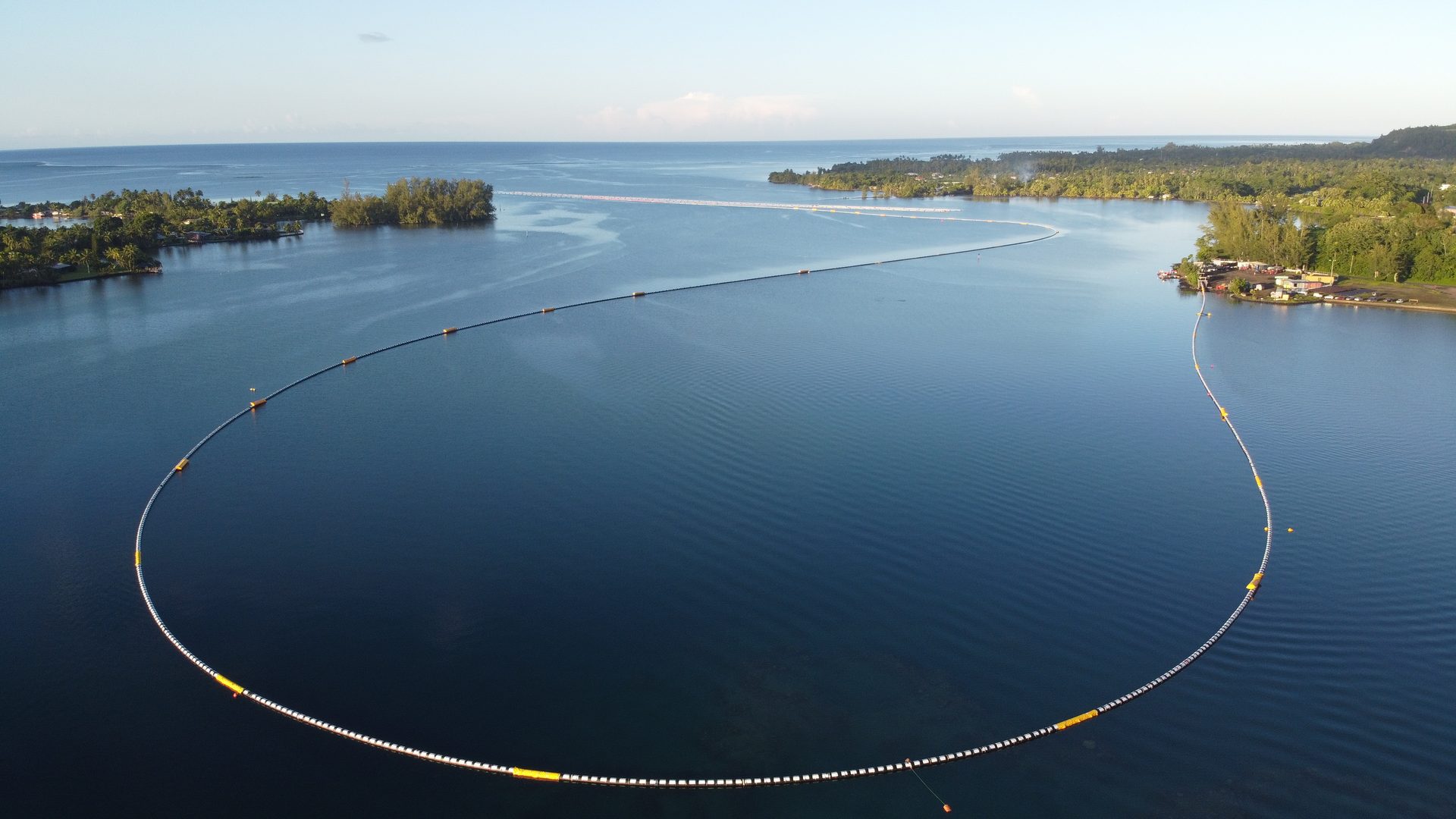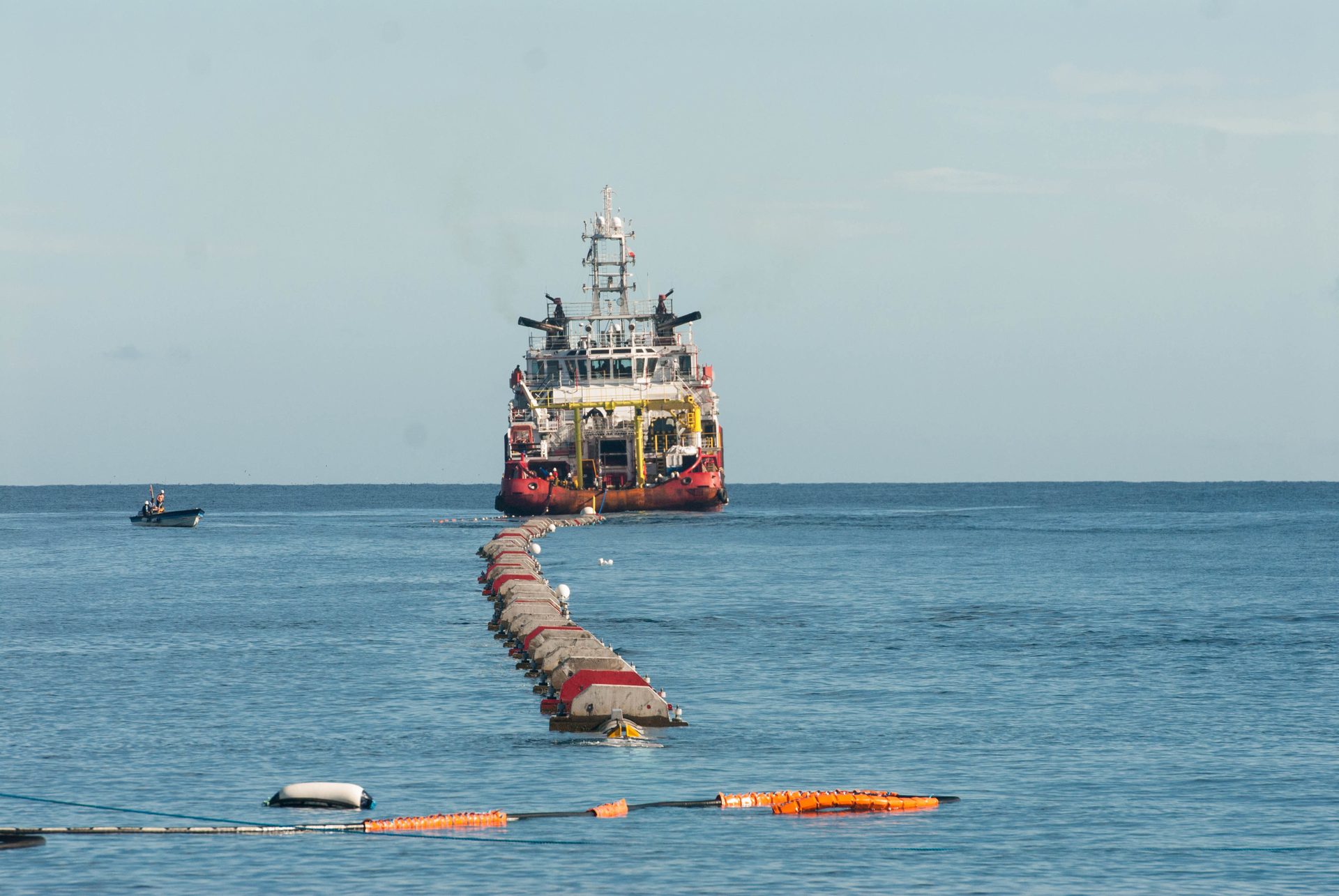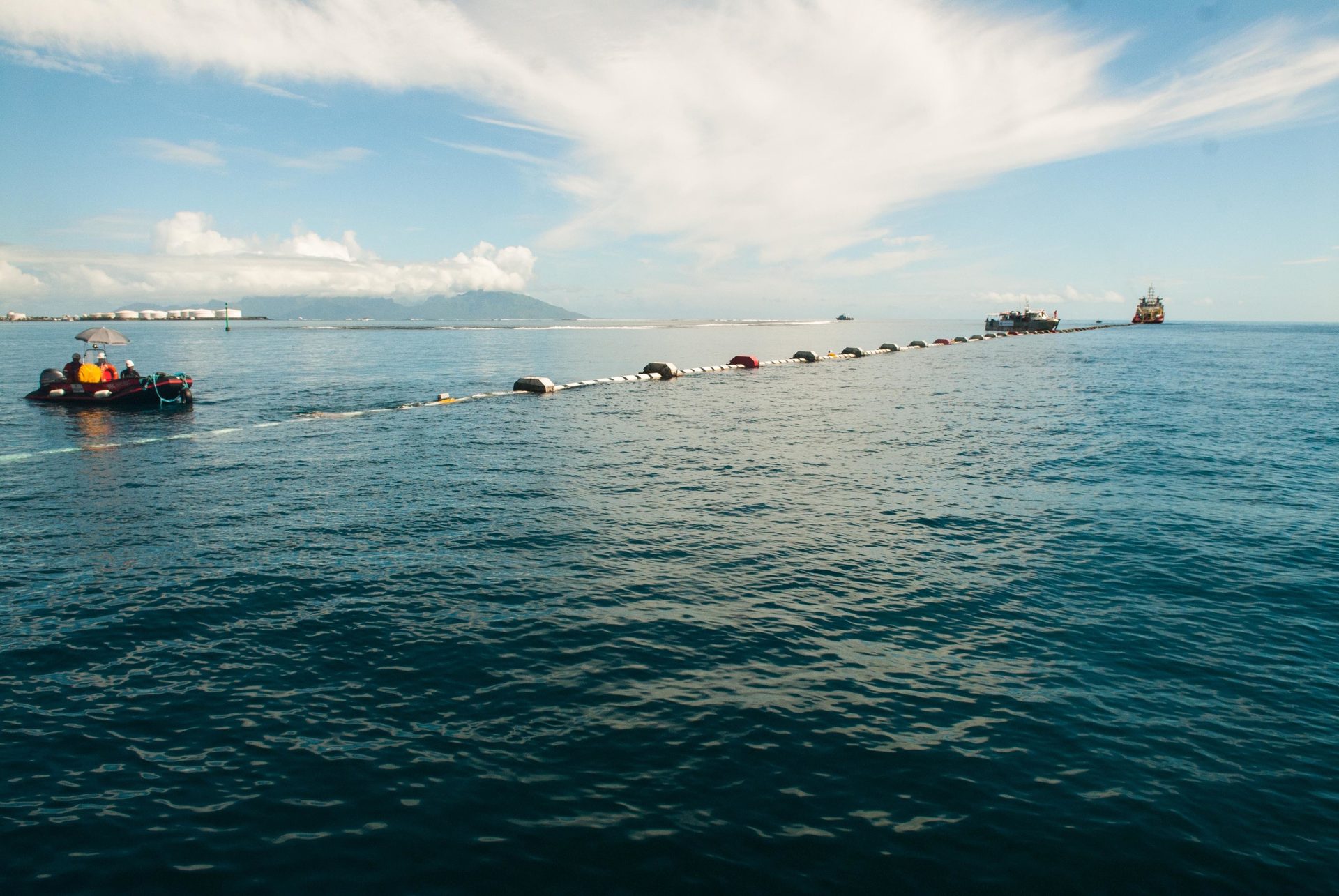Sea breeze
Sea breeze
Case
Study
Piping system detects weld failures and supports Tahiti Hospital’s ocean-driven air conditioning unit.
By Thomas Renner
A sea water air conditioning system installed at a hospital in Tahiti includes an underwater piping system that spans 4,000 meters, the longest of its kind in the world. Photos courtesy of GF Piping Systems
The state of Rhode Island has very little in common with the city of Anchorage, Alaska. Both, however, have something in common with the worldwide travel destination known as French Polynesia.
Comprised of 121 islands and atolls, this overseas region of France is scattered across about 1,200 square miles of the South Pacific — an area roughly the size of New England’s smallest state. In population, however, French Polynesia is far more similar to Alaska’s most populated city, with about 280,000 residents.
The General Hospital of French Polynesia has a distinctive feature that likely cannot be found in Providence, Anchorage, or most anywhere in the United States. Last year, workers from Geocean installed a sea water air conditioning system at the General Hospital of French Polynesia. The system is the longest of its kind in the world and includes two underwater pipelines spanning 4,000 meters — nearly 2.5 miles — with a unique monitoring system that protects the structural integrity of the pipelines. The system provides multiple benefits, including cost savings for the hospital and significant reduction of greenhouse gases.

A man works on one of the pipes, which includes ultrasonic non-destructive testing and was developed by GF Piping systems.
Sea water systems
Amid the worldwide focus on combating climate change, sea water air conditioning systems (SWAC) have become more widely considered. As the temperature rises around the globe, so does the demand for air conditioning. Traditional cooling systems, however, require extreme amounts of electricity and bring about undesired environmental consequences.
Air conditioning is a year-round must in French Polynesia, where temperatures sit in the 70s and 80s for the entire year. On the island of Tahiti, where the hospital is located, the average temperature ranges between 75° and 90° for most of the year. The climate, scenery and attractions make it one of the most popular visitor destinations in the world.
SWAC systems started in the 1960s and gained traction in the 1990s. The systems use cold ocean water from depths of below 700 meters. The cold water is pumped to the building, where it can be used in cooling systems. The warmer water returns to the ocean.
While the start-up costs are higher than traditional systems, SWAC systems operate at about 15% of the power consumption of standard systems. SWAC systems reduce emissions and greenhouse gases and eliminate chemicals needed for chiller machinery, cooling towers and water usage. They also reduce noise and the need for on-site machinery space. The systems also use a resource already in place, recycling it. “Sea Water Air Conditioning (SWAC) is the perfect technology to decarbonize heating and cooling systems around the world’s coasts,’’ Ocean Energy Europe says on its website.

A 3,8000 meter intake pipe reaches a maximum depth of 900 meters in the South Pacific.
Cooling the hospital
The government of French Polynesia commissioned the SWAC system for the hospital with the objective of helping phase out fossil fuels and taking advantage of the reduced costs and lower energy consumption.
The system designed by Geocean includes two piping systems. The first pipe sends sea water at 41° F into the hospital air conditioning system. The water is discharged back into the ocean at temperature of around 53° F.
The 3,800-meter intake pipe reaches a maximum depth of 900 meters in the South Pacific. The 200-meter discharge pipe returns the water to the ocean. The pipelines are formed of several NPS 710 mm HPDE pipes welded together through polyfusion.
Geocean, based in France, specializes in marine and offshore works. It is part of VINCI Construction Grands Projets, which develops projects worldwide including marine intake and outfall systems, offshore floating wind and pipeline and offshore oil terminals. The $32.6 million project was completed in less than a year. It includes three pumps and has an expected lifespan of 30 years.

Sea water air conditioning systems provide cost savings and a reduction of greenhouse gases.
Weld, weld, weld
Piping system integrity is crucial for owners and operators of water, gas and chemical plants. SWAC systems also rely on the strength of the piping systems.
The hospital’s system includes ultrasonic non-destructive testing for pipes developed by GF Piping Systems. The technology proves a pass/fail grade and works on HDPE materials. Using ultrasonic waves, the system detects possible defects in a material and a first weld assessment algorithm, the first in the world, identifies indications of weakness in the weld. It also analyzes the information to evaluate the weld’s strength over the long term.
Weld issues are significant in many piping systems. Nearly 1 in 300 welds deteriorate annually due to poor installation. The breakdowns result in a loss of more than $1 million to repair a leak in gas pipeline. Just one failure can jeopardize an entire system. Leaks in new systems can have a serious detrimental impact on the economic benefits of the project and the image of the business.

The ultrasonic non-destructive testing system developed by GF Piping Systems identifies indications of weakness in the weld and assigns a pass/fail grade.
Assessing welds
While welds play a significant role in system performance, assessing them is not an easy task. Until recently, assessing the quality of welds was impossible without destroying them. Project supervisors sometimes replaced welds that were still in good condition.
Conventional pressure tests cannot provide information on a system’s long-term performance, and destructive tests are not able to ascertain the quality of untested welds.
In ultrasonic non-destructive testing (UT NDT), inspectors visit the site and use advanced, patented equipment and ultrasonic testing methods, such as time of flight diffraction (TOFD) and phased array ultrasonic testing (PAUT).
If inspectors see indications of weakness, they identify and measure them before recording the information. A report is fed into an assessment algorithm, which assigns a pass/fail grade. If the welds are approved, trenches can be resealed and no further action is required, ensuring complete peace of mind to the owner.
The ultrasonic NDT checks that the 400 welds are completely sealed and assigned an immediate pass or fail grade. A full report is available within 24 hours.
The project, which was completed in less than a year, includes polyethylene pipes that are flexible and mold around the seabed environment. That creates areas of tension on the pipe walls, which can cause weak points around the welds in the fused material.
Ultrasonic NDT testing warrants the same level of efficiency in welds as in the rest of the pipes throughout the system’s lifespan. It can also be used prior to installation and operation without sending random welds to a laboratory. There is no possibility to repair the pipe if the weld fails once it is on the seabed.
“GF Piping Systems was the only one to prove and guarantee us the efficiency of their system. The technical solution was quick efficient and secure,’’ said Roy Issa, offshore installation manager at Geocean and Damien Moine, sales manager for Northwest Africa and head of utility sales at GF. “It made the combination of GF and Geocean a winning partnership for this project.”

Geocean, based in France, completed the $32.5 million project in less than a year.
Money and energy savings
The goal of the hospital was to ensure comfort for patients and save operational costs. From that perspective, the objective reaped significant dividends. The project will save more than $3 million in energy costs.
The bigger numbers, however, might be found in the energy figures. The SWAC system helps the Polynesian government reduce electricity consumption by 12 GWh. Just one GWh is the equivalent of 3.125 million photovoltaic panels. With 12 GWh in savings, the hospital saved 37.5 million PV panels.
Carbon dioxide emissions decline substantially as well. The project reduces that figure dramatically by 5,000 metric tons. For comparison, one metric ton can fill a cube that is 27 feet tall, wide and long. Each American fills about 16 of those “cubes” every year.
The hospital is also not the only SWAC application in French Polynesia. The InterContinental Resort and Thalasso-Spa on the island of Bora Bora also uses a sea water system. SWAC systems are perfect for the region, but their reliance on sea water makes them appropriate only for structures located near oceans. Oklahoma City, for instance, won’t be installing a SWAC system any time soon. But for sites in range of the shoreline — including parts of Anchorage and much of Rhode Island — their seaside locations could make such a system viable.
While no day at the beach to design and install, the environmental benefits and cost savings make this rapidly emerging technology an important innovation in addressing the climate crisis.

